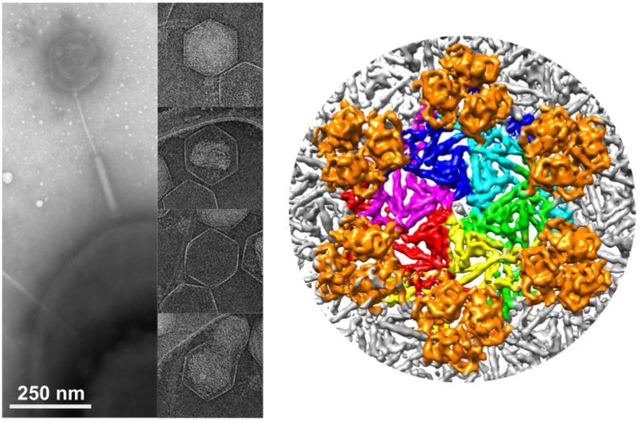
Phage G genome: AI analysis maps out world’s largest cultivated bacteria-killing virus
On Oct. 29, 2025, University of North Carolina at Charlotte (UNC) researchers leading a multidisciplinary team across four universities have successfully resolved the entire genome of “Phage G,” the largest bacterial virus (aka bacteriophages or phages) ever cultivated in a physical lab environment.
Studied by multiple labs across the globe for over 50 years, this massive phage (e.g., megaphage) has now been fully mapped for the first time, thanks to this Charlotte-led effort. Due to the proximity of computer science and life sciences at UNC Charlotte’s Center for Computational Intelligence to Predict Health and Environmental Risks, also known as CIPHER,—the use of AI is coming to the fore in and is revolutionizing science to solve life-threatening problems such as multi-drug resistant bacteria.
Published September 30 in the journal, npj Viruses, the study was led by UNC Charlotte College of Computing and Informatics Bioinformatics and Genomics master’s students Andra Buchan and Stephanie Wiedman along with Assistant Professor of Bioinformatics and Genomics Richard Allen White III, who is also affiliate faculty of the North Carolina Research Campus and the Charlotte Artificial Intelligence Institute. Instrumental in the effort were collaborators from three other institutions: Julie A. Thomas from Rochester Institute of Technology’s Gosnell School of Life Science, Qibin Zhang from the University of North Carolina at Greensboro and Philip Serwer from UT Health San Antonio.
Environmental DNA sequencing has shown that megaphages are extremely prevalent—from deep in the guts of humans to natural ecosystems—but historically have been discovered only via computation on environmental DNA data. Typically, researchers have been unable to grow and culture these megaphages within laboratory conditions.
Phages infect, kill and reproduce exclusively within bacteria. They do not cause disease directly in humans but can modify bacteria in ways that cause disease or promote health. Phages long have been a subject of interest for scientists, including Buchan, Wiedman and their fellow researchers in White’s UNC Charlotte research lab.
Phage G is massive in size compared with other phages—over three times larger physically than many. Its massive size is proportional to the level of mystery by which it is surrounded. Phage G shares much in common with another megaphage found computationally by environmental DNA analyses from the guts of moose.
Thanks to the advanced computational techniques used by White with his students, including artificial intelligence-driven analysis methods to predict Phage G’s taxonomy, life cycle, and protein structure, UNC Charlotte researchers like Buchan and Wiedman are able to push their field forward with transformative applications to fight disease and promote health.
Tags:
Source: Phys.org
Credit:
